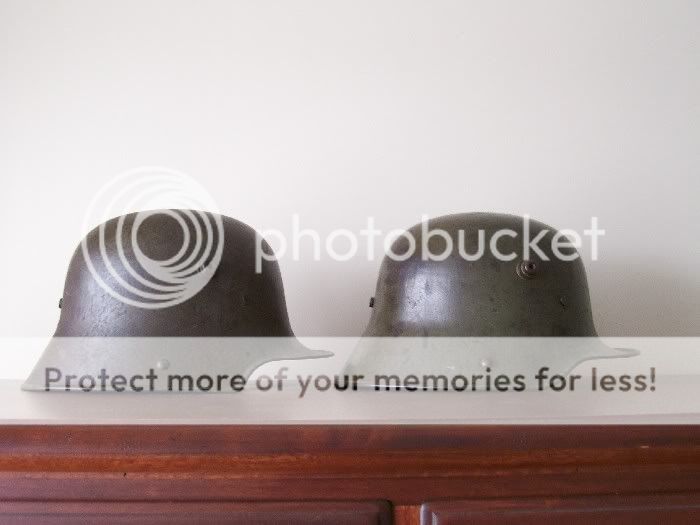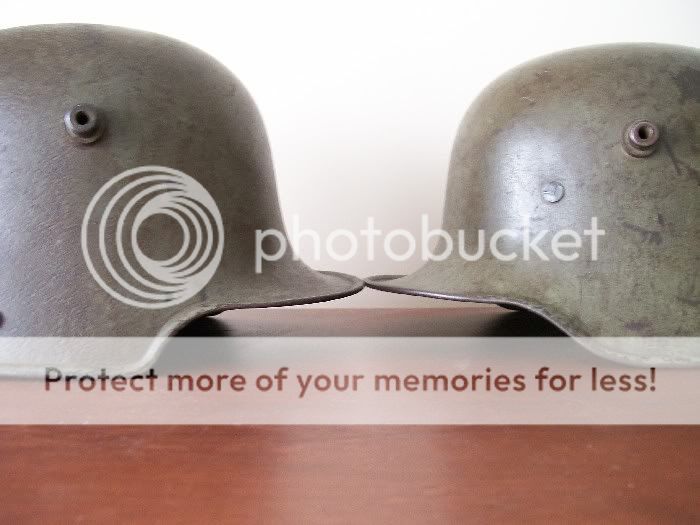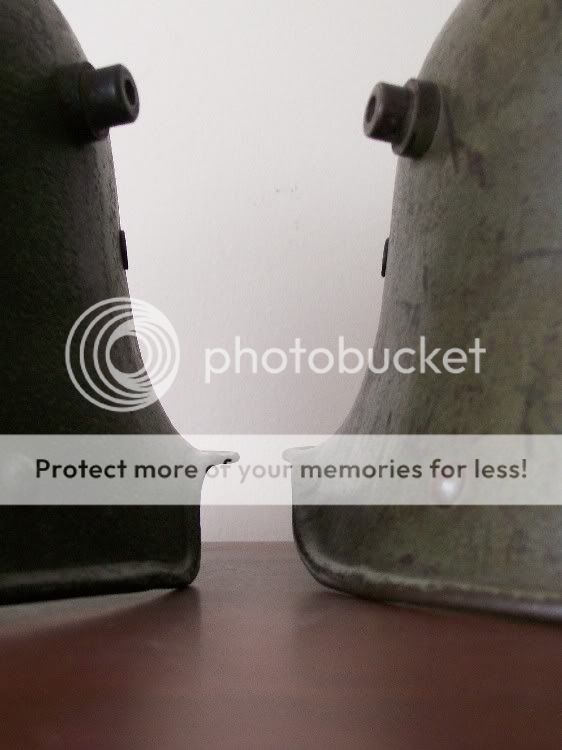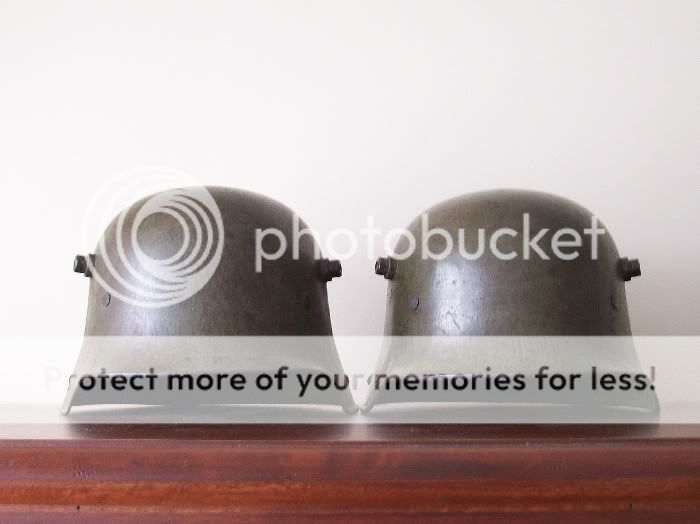I am hopeing I may have finally completed a quest for a M18 helmet! Have plenty of M16 and M17's but have had trouble finding a good M18.
Well I think I may have finally scored, has all the correct characteristics!
Maker and sized marked ET66, leather pads with horse hair. Metal liner band with D loop for chinstraps. The loops are rivited to the liner band and not the helmet.
There is another stamping in the inside top of the helmet BD491?? if anybody has any idea what this marking is, I would apprecaite it.
Any feedback would be appreciated.
thanks
James





Well I think I may have finally scored, has all the correct characteristics!
Maker and sized marked ET66, leather pads with horse hair. Metal liner band with D loop for chinstraps. The loops are rivited to the liner band and not the helmet.
There is another stamping in the inside top of the helmet BD491?? if anybody has any idea what this marking is, I would apprecaite it.
Any feedback would be appreciated.
thanks
James



























